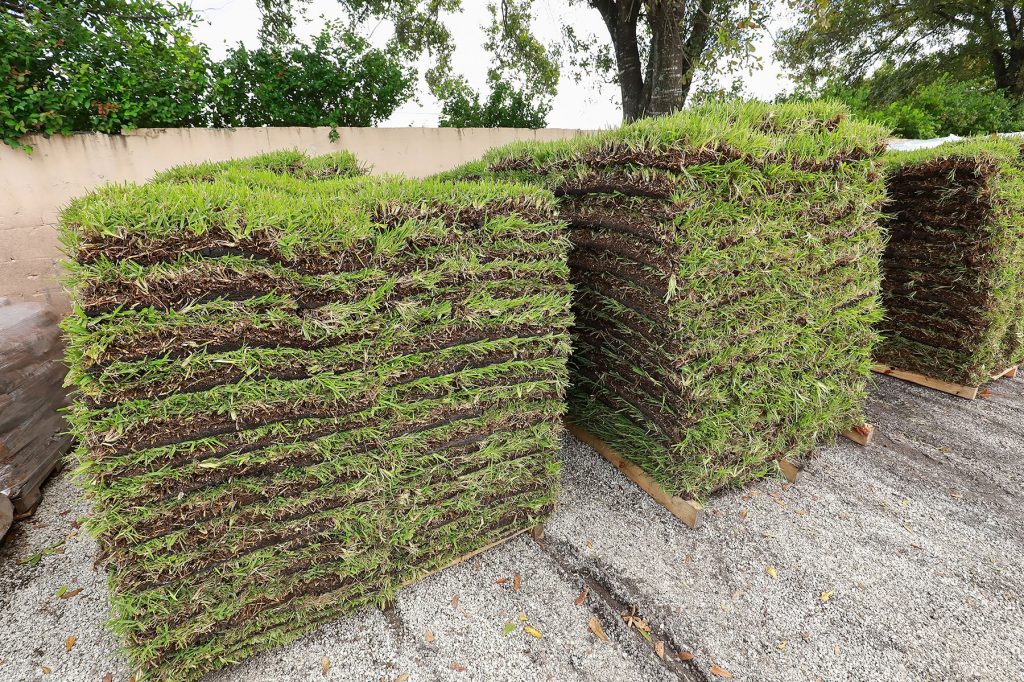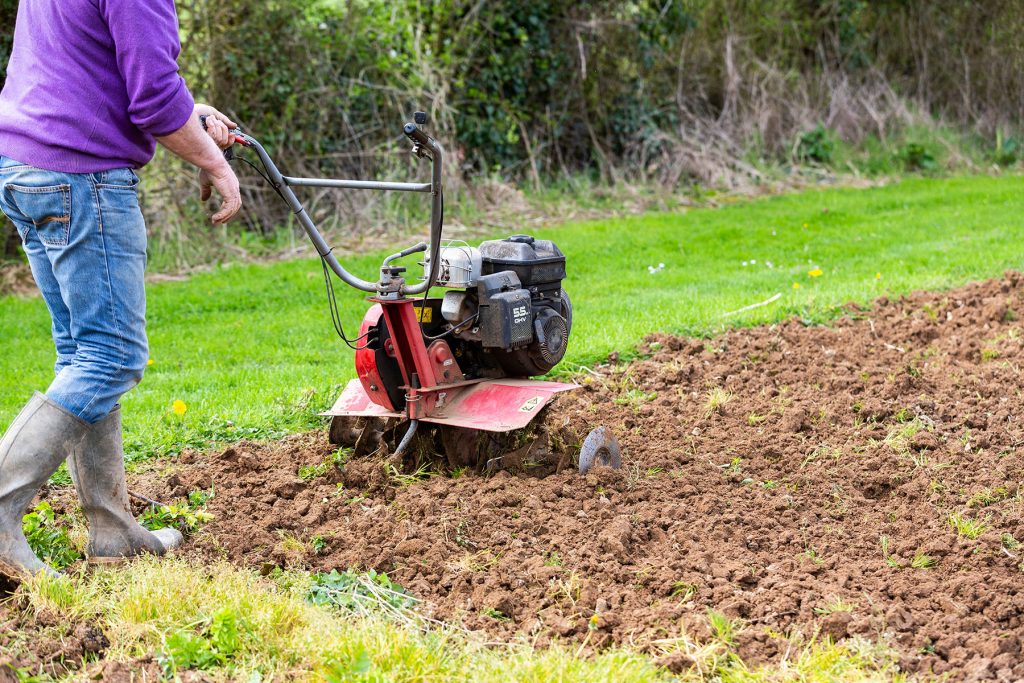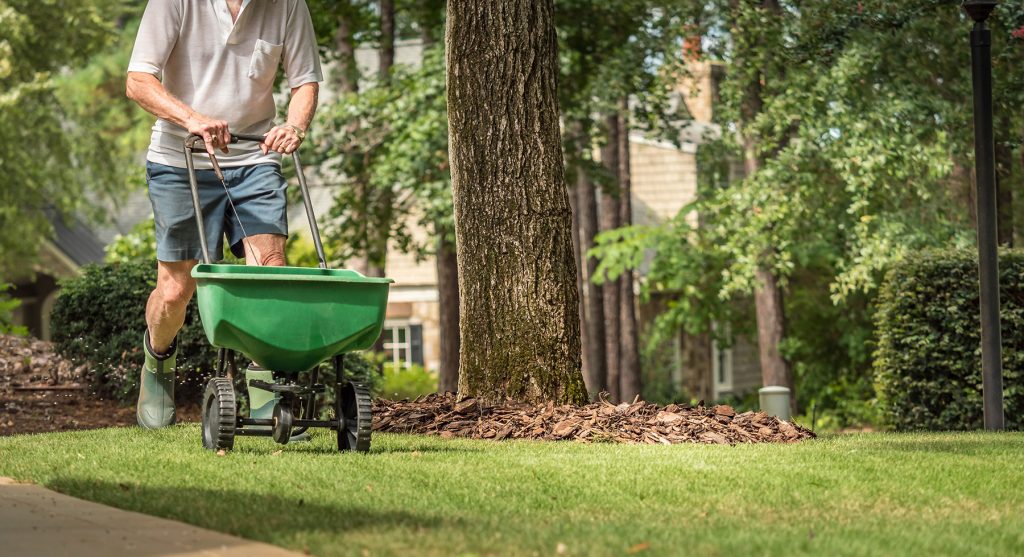
Carolina Fresh Farms has combined over 50 years of production practices along with knowledge from our on staff horticulturist and soil specialist in order to provide you with the best practices to help manage a successful and beautiful lawn. With our knowledge, expertise and quality sod, your Carolina Fresh Farms lawn has the ability to become the best lawn in the neighborhood.
There are proper steps to take when installing new sod in order for it to establish and thrive at its full potential. Follow our installation procedure below and be sure to download our informational brochure on Preparing and Installing Sod.
Step 1: Soil Sample
Taking a soil sample first is highly advised before proceeding with anything else. Although this step is optional, a soil sample will indicate your fertility requirements and how to amend your soil so that your grass has a healthy environment to grow in. It will also help you determine why your current lawn may not be performing as well or why it died. Soil amendments are typically cheap and easy to use. All of our Carolina Fresh Farms outlet locations carry everything your soil needs.
Once a soil sample has been collected, simply drop it off at one of Carolina Fresh Farms’ seven locations or have it tested by a qualified consultant.
Step 2: Kill Existing Grass
The next step is to remove the current grass installed in your lawn. If you have existing grass in the front or backyard, spray Roundup or some other glyphosate-based product on the area you want to replace. This makes the grass easier to remove before tilling. Some areas require more than one application to kill certain varieties of grass or weeds. Applying Roundup will also serve to insure you have less weeds and other grass competing for space as your new lawn goes through its establishment process.
Roundup applications will kill any and all vegetation it comes in contact with, so be sure not to get it in any desirable plants bordering the lawn. Roundup applications should take place at least seven days before sod installation.
Step 3: Roto-till
Once your current grass is dead from Roundup applications, you can begin removing it with a roto-tiller. Roto-till the area at a depth of about six inches and remove any debris, rocks or dead grass. This clears a path for you to easily remove the grass. A good tip is to slope the site away from your foundation and keep the grade at least one inch below sidewalks and driveways.
Once this project is complete, the area you just roto-tilled will need to be watered so that the soil settles and provides a moist base for the sod—it is also one of the most important steps before installing sod. Providing your sod with a moist base dramatically reduces the amount of water required after installation is complete. It’s crucial to the sod’s survival as it provides water to the sod’s roots during the stressful establishment procedure.

Step 4: Installation
This is by far the most exciting part of the installation process as you will begin to see what your new lawn is going to look like. Your selection of Carolina Fresh Farms sod will be delivered as pallets and placed around the site. Installation should begin immediately and then watered in within 30 minutes of laying the sod. As a living product, sod will require contact with the soil and moisture, especially for the first two to four weeks.
Begin by laying the sod along the longest straight line in your area and progress in a staggered, brick-like pattern. The sod should be laid tightly together without overlapping. This makes it easier for the sod pieces to connect to each other and create a uniform carpet-like canopy across the lawn’s surface.
Once installation is completed, the entire lawn needs to be watered thoroughly with a depth of about one inch within 30 minutes of installation. Your new lawn will need to be watered daily for the first two weeks. Be careful not to overwater your lawn as this may encourage disease outbreaks. Don’t saturate it to the point of creating puddles as it will need to breathe, too.
After the first two weeks, you can switch your irrigation schedule to provide infrequent, deep waterings three times a week. This encourages deep rooting, which results in resistance to drought or other environmental stressors.
Keep foot traffic and other uses of your lawn at a minimum while the grass is establishing for the next month after installation.
Step 5: Fertilize New Sod
The last step we recommend in the installation process is to apply a starter fertilizer. This is a cheap way of insurance on reducing stress and increasing rapid rooting of your new sod. Sod goes through a lot of stress when it is cut and transplanted. A starter fertilizer promotes root growth so that the roots set into your existing soil.

Partaking in these five sod installation steps will ensure a successful, thriving lawn. Once the establishment process is complete a month after installation, you can begin to transition your lawn to a regular maintenance schedule. Here are a few remaining tips for new sod care until then.
Make Applications of a Fungicide
Fungicide on newly laid sod is like giving your yard a booster shot. A fungicide application will aid in disease control during certain times of the year. Centipede, fescue and St. Augustine are grasses that are more susceptible to disease issues in warm, wet environments. We recommend that these grasses be treated with fungicide when installed during times of disease development. Please consult with one of our experts to help select the best product available to address the needs of your new lawn. Applications of a fungicide should take place between April 15th through September 15th for all grass types.
Starter Fertilizer Application Schedule
For centipede, bermudagrass, St. Augustine, or zoysia, starter fertilizer applications should take place between May 1st and August 31st.
For fescue, starter fertilizer applications should take place around September 1st–April 15th.
Congratulations on your new lawn! Don’t forget to sit back and enjoy it every once in a while. Carolina Fresh Farms thanks you for your interest in your lawn. For any further questions, feel free to contact us or visit one of our seven locations.
